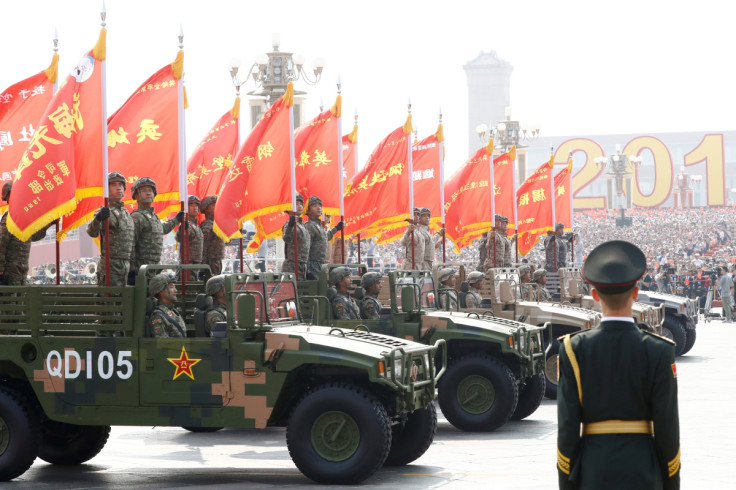China Develops Satellite-Guided Short-Range Precision Missiles Capable Of Striking Taiwan: Report
KEY POINTS
- The DF-12 currently for exports is a solid-fueled advanced short-range missile comparable to Russia's Iskander, as per China
- DF missiles could be armed with a thermobaric warhead to generate a high intensity earth-penetrating explosion
- China claims Taiwan to be part of its territory and has long vowed to "reunify" the island
Amid rising fears of an invasion of Taiwan, a media report said Thursday that the Chinese military has developed a range of satellite-guided short-range missiles and multiple-launch rocket systems (MLRS) capable of carrying out precision strikes on Taiwanese military and government infrastructure.
The People's Liberation Army (PLA) has "developed many other types of short-range missiles armed with specific warheads that are tailor-made for precision strikes," an unidentified military source told South China Morning Post (SCMP) while speaking about the M20 missile variant of the Chinese DF-12 missile that is currently meant only for exports.
The DF-12 is a solid-fueled advanced short-range missile that China claims is comparable to Russia's new short-range missile known as the Iskander. Capable of mid-flight maneuvering, the missile's official range is said to be between 100 and 280 kilometers (62 to 173 miles), with reports suggesting its actual range could be as long as 400 kilometers (about 248 miles).
Meanwhile, the missile buildup by China has prompted Taiwan's defense ministry to seek funds for 36 new hardened hangars designed to withstand Chinese Dongfeng (DF) ballistic missiles. The new hangars will be constructed over the next seven years at Taiwan's largest air force base located at Ching Chuan Kang in the central city of Taichung.
However, an expert SCMP had spoken to said Taiwan's newly proposed aircraft hangars would not be capable of withstanding a barrage of China's satellite-guided short-range precision missile strikes.
"China's ballistic missiles and multiple launch rocket system (MLRS) now use the BeiDou satellite navigation and terminal infrared image guidance systems, enabling them to hit any reinforced aircraft hangar and penetrate it precisely," Andrei Chang, editor-in-chief of Canada-based military magazine Kanwa Asian Defence, told SCMP.
Chang said the 8,820-pound DF missile could be armed with a thermobaric warhead that uses surrounding oxygen in the air to generate a high-intensity earth-penetrating explosion. With an error probability of less than 1 meter (3.3 feet), Taiwan's newly proposed fighter jet hangars will not be able to withstand the impact.
Tensions between China and Taiwan escalated in early August after a visit by House Speaker Nancy Pelosi, following which Beijing launched several days of unprecedented live-fire drills. China claims Taiwan to be part of its territory and has long vowed to "reunify" the island, by force if necessary.
In its latest round of provocations Monday, Beijing sent several fighter jets including a record number of 18 nuclear-capable bombers along with warships into Taiwan's air defense identification after the U.S. approved the sale of more than $425 million worth of military spares to Taipei.

© Copyright IBTimes 2025. All rights reserved.






















